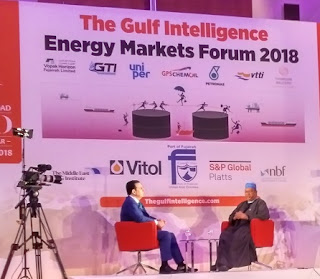By any stretch of the imagination 2018 is coming to a very volatile end for the oil and gas markets. The month of November saw three declines of over 7% in a short space of 10 sessions, and the OPEC summit in December has (so far) failed to calm the market. Of course, oil and gas investment has never been about the here and now, but rather about the longer term.
Wider market expectations are that oil, using Brent as benchmark, will continue to oscillate in the $50-70 per barrel range, while natural gas markets will benefit over the medium-term courtesy of the power sector's need for a bridging fuel in its inexorable march to a low-carbon future. Among investment hubs on the market's radar is Morocco. The country's Office of Hydrocarbons and Mining (ONHYM) is optimistic about oil and gas reserves both onshore and offshore.
Furthermore, as a country of around 40 million people, Morocco is also a healthy energy consumption market that imports over 90% of its hydrocarbon needs. Align the two, and upstream and midstream opportunities become clearer.
Unsurprisingly, as is often the case with nascent energy hubs, independent exploration and production (E&P) companies are leading the Upstream charge – including London-listed ones such as SDX Energy, Chariot Oil & Gas and Europa. That said majors such as Eni are also rubbing shoulders with the upstarts.
With an aim of reconciling thoughts over global market permutations and ongoing developments in the Moroccan oil and gas sector, the Oilholic is delighted to be speaking at the 2nd Morocco Oil & Gas Summit in Marrakesh, February 6-7, 2019, being organised by IN-VR Oil & Gas.
Holistically speaking, Rabat – given its eagerness to develop the domestic oil & gas industry – offers some some of the most cost competitive fiscal and commercial terms in the global market. ONHYM, which by Moroccan law is a partner in the licences usually via 25% general carried interest in phase one explorations, offers reliable partnerships and the operating climate is underpinned by a stable regulatory regime.
During the exploration phase 100% of the costs are paid by the contractor without any reimbursement from ONHYM, while during the exploitation period the costs are shared between the parties in accordance with their participation interest in the production concession. There is no corporation tax for the first 10 years of production. Operators also benefit from solid infrastructure.
Of particular significance is the ONHYM pipeline system with a total length of 213 km in the Gharb basin and 160 Km in the Essaouira Basin. Capacity increments have followed via a new pipeline project of 55 km in the region of Gharb. Overall, a destination to watch out for, and this blogger early awaits the summit. But that’s all for the moment folks! Keep reading, keep it ‘crude’!
To follow The Oilholic on Twitter click here.
To follow The Oilholic on Google+ click here.
To follow The Oilholic on Forbes click here.
To email: gaurav.sharma@oilholicssynonymous.com
© Gaurav Sharma 2018. Photos: Royal Dutch Shell / IN-VR Oil & Gas
























